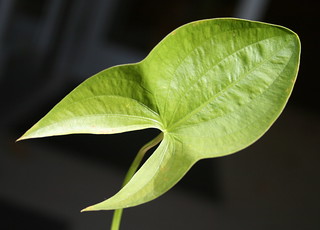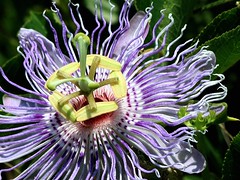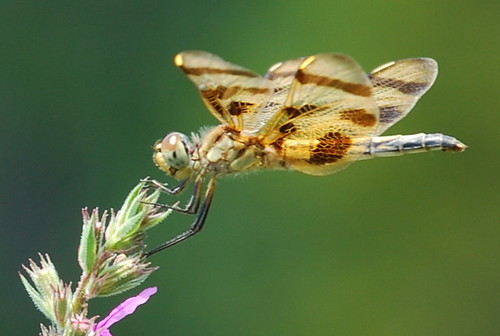Crows are so common and well-known in our area that I've never bothered to write about them -- or really think much about them. I finally got around to reading a copy of Gifts of the Crow: How Perception, Emotion, and Thought Allow Smart Birds to Behave Like Humans that I received as a review copy, and am blown away.
Here are my top 5 amazing facts:
1. Crows display remarkable teamwork. You may have seen them mobbing a hawk to make it go away. They've also been seen to steal from other animals in pairs -- with one pulling a seagull's tail, say, while the other crow grabbing the tasty mollusk the seagull drops. And they have been seen to come to each other's aid, helping an injured crow walk to shelter.
2. Did you ever learn in elementary school that one of the things that separates humans from the animals is that humans use tools? Well, crows use tools. For example, this one figured out how to bend a wire into a hook to retrieve food.
3. Crows recognize faces, remember the behavior of the people with those faces, and pass on knowledge of the faces to other crows. If a person wearing a certain mask does something to threaten or annoy a crow, anyone wearing that mask in the future will be scolded and harrassed by crows in the area.
4. Crows are very persistent. One Seattle resident spent a day shooing crows away from a robin's nest in his yard (crows steal and eat eggs). For a year, scolding crows followed the man to the bus stop every workday, sometimes dive-bombing and hitting him in the head. When he moved to a new house 20 blocks away, he left at three in the morning to be sure the crows were asleep and wouldn't start pestering him at his new location.
5. A raven saying "Nevermore" is actually possible. Crows and ravens have been known to learn short words and phrases. Some even appear to understand the context of human language: one responded "what?" when its owner called it by name; one would say "Hello, Bob" only to its owner Bob; one would reply to "that's for you" with "that's for me."
There's much more detail on how crows do this, and possible reasons why, in Gifts of the Crow. Have you observed any cool crow behavior? We'd love to hear about it.
Getting outside, inside the beltway: tips on getting outdoors in the Washington, DC area.
Most Popular Posts
-
Photo credit: ilkerender Last year we listed places to swim near DC and places to rent a canoe near DC . Today we return to complete the s...
-
Summer calls out for being on the water. We've found more than a dozen locations where you can rent a canoe or kayak in the Washington, ...
-
What a lovely break in the heat we're having. Here are some things to keep an eye out for in August. Links are to previous LOOK FOR post...
-
This spring has been cold and a little slow, like last year. Morels , in particular, are just starting to show up. Below are all the things ...
-
The Jack in the pulpits are starting to unfurl right now. I've always loved these flowers, showy in their design rather than their color...
-
This time last year, the wood frogs were out and had already laid their eggs. As of this morning, the pond where we always find them was com...
-
Our monthly roundup of things to look for this month: Photo credit: InspiredinDesMoines I originally wrote about bald eagles for t...
-
I've been distracted from the Natural Capital but I haven't totally forgotten about you guys...Here are some of the other things we ...
-
Two of the things we love best about living in the DC metro area are the public transportation system, and the parks. And so, one of our mai...
-
If I had to name my biggest frustration with the nature around DC, the lack of good swimming holes might top the list. Until 7th grade I liv...
Tuesday, August 28, 2012
Saturday, August 25, 2012
Trip Report: Scott's Run
We had a great walk at Scott's Run with a nice surprise: the pawpaws are just starting to drop. In fact, a few dropped with a loud *plunk* right as we were walking by!
We found a nice stand of cardinal flowers, sat down for a bit, and sure enough, a hummingbird came by and fed on the flowers just a few feet in front of us. It almost never fails, but it never fails to take my breath away when one comes so close.
Also blooming:
Joe pye weed (Eupatorium sp.)
Jimson weed (but no sphinx moths, not a big surprise since we were there during the day)
Woodland sunflower (Helianthus divaricatus)
Wingstem (Actinomeris alternifolia)
New York ironweed (Vernonia noveboracensis)
Mistflower (aka Wild Ageratum, Eupatorium coelestinum)
Blue lobelia (Lobelia syphilitica)
Sharpwinged monkey flower (Mimulus alatus)
Phlox (Phlox paniculata?)
and the spicebush berries (Lindera benzoin) are starting to turn red.
other critters of note:
Baltimore oriole
Spicebush and tiger swallowtail butterflies
Great blue herons
Green heron
Piliated woodpecker
and lots of toads
And some fun fungi:
A nice flush of oyster mushrooms (Pleurotus ostreatus)
A big Berkeley's polypore (Bondarzewia berkeleyi)
and bright orange Mycena leaiana.
What have you been seeing on the trail lately? We'd love to hear about it!
We found a nice stand of cardinal flowers, sat down for a bit, and sure enough, a hummingbird came by and fed on the flowers just a few feet in front of us. It almost never fails, but it never fails to take my breath away when one comes so close.
Also blooming:
Joe pye weed (Eupatorium sp.)
Jimson weed (but no sphinx moths, not a big surprise since we were there during the day)
Woodland sunflower (Helianthus divaricatus)
Wingstem (Actinomeris alternifolia)
New York ironweed (Vernonia noveboracensis)
Mistflower (aka Wild Ageratum, Eupatorium coelestinum)
Blue lobelia (Lobelia syphilitica)
Sharpwinged monkey flower (Mimulus alatus)
Phlox (Phlox paniculata?)
and the spicebush berries (Lindera benzoin) are starting to turn red.
other critters of note:
Baltimore oriole
Spicebush and tiger swallowtail butterflies
Great blue herons
Green heron
Piliated woodpecker
and lots of toads
And some fun fungi:
A nice flush of oyster mushrooms (Pleurotus ostreatus)
A big Berkeley's polypore (Bondarzewia berkeleyi)
and bright orange Mycena leaiana.
What have you been seeing on the trail lately? We'd love to hear about it!
Monday, August 20, 2012
LOOK FOR: Katniss (a.k.a. Wapato, Duck Potato, Arrowhead, Sagittaria)
I finally got around to reading The Hunger Games this summer. The main character, Katniss, has grown up hunting and foraging in Appalachia, which turns out to be a real asset when she is forced to spend weeks fighting to the death with other teenagers in a large expanse of forest. I haven't read a novel with so much foraging in it since My Side of the Mountain
this summer. The main character, Katniss, has grown up hunting and foraging in Appalachia, which turns out to be a real asset when she is forced to spend weeks fighting to the death with other teenagers in a large expanse of forest. I haven't read a novel with so much foraging in it since My Side of the Mountain .
.
But it drove me crazy that I didn't know one of the main vegetables she relies on: katniss. When she was a child, Katniss's father told her: As long as you can find yourself, you'll never starve.
I was too engrossed to put the book down and look it up, but as the story went on katniss sure sounded a heck of a lot like a plant I know by three other names: wapato, duck potato, or arrowhead (for some reason "duck potato" always comes to mind first -- what a great name!).
This abundance of names is why botanists like Latin names (in this case, Sagittaria). It's not just to be arcane: they help make sure we're all talking about the same plant.
And sure enough, katniss is an Algonquin name for Sagittaria. It's another nice link to the main character: she's not just a forager, but an expert archer -- just like Sagittarius.
And you can see from the leaf how the plant got its name:
The USDA plants database lists 10 different species of Sagittaria as growing in the mid-Atlantic. They've all got arrowhead-shaped leaves -- some skinner than others.
There are other wetland plants with arrow-shaped leaves, but you can tell Saggitaria from its beautiful vein pattern: all veins starting from a single point at the stem, with some pointing down to end in the pointy bottoms of the arrowhead.
Sagittaria was cultivated by native people of North America for its tubers, which are also eaten by ducks, geese, and muskrats. Sam Thayer gives an extensive account of how to find and harvest the tubers in his excellent book The Forager's Harvest .
.
In some parts of North America (including Sam Thayer's Wisconsin) there are wetlands with acres of Saggitaria growing in clean water, just begging to be eaten. The Washington, DC metro area is not in that category. All of our water is polluted, and while Saggitaria is growing somewhere in most wetlands I've visited, it is not abundant. It's just not realistic to get up your hopes of responsibly foraging for katniss in our area.
But you can find it, and appreciate knowing the connection to foragers in centuries past...and in the futuristic world of the Hunger Games.
In the wild: There's quite a bit of Saggitaria growing in the C&O Canal between the westernmost parking lot at Carderock and the Marsden Tract Campground (map). I'd love to hear about other patches!
In your yard: We've had a single Sagittaria growing in our pond for a few years...the leaves are smaller than in the wild, possibly because it wants deeper mud to form bigger tubers? We haven't mucked around in the water to figure out what's going on. Right now I'm just enjoying the lovely flowers!

But it drove me crazy that I didn't know one of the main vegetables she relies on: katniss. When she was a child, Katniss's father told her: As long as you can find yourself, you'll never starve.
I was too engrossed to put the book down and look it up, but as the story went on katniss sure sounded a heck of a lot like a plant I know by three other names: wapato, duck potato, or arrowhead (for some reason "duck potato" always comes to mind first -- what a great name!).
This abundance of names is why botanists like Latin names (in this case, Sagittaria). It's not just to be arcane: they help make sure we're all talking about the same plant.
And sure enough, katniss is an Algonquin name for Sagittaria. It's another nice link to the main character: she's not just a forager, but an expert archer -- just like Sagittarius.
And you can see from the leaf how the plant got its name:
The USDA plants database lists 10 different species of Sagittaria as growing in the mid-Atlantic. They've all got arrowhead-shaped leaves -- some skinner than others.
There are other wetland plants with arrow-shaped leaves, but you can tell Saggitaria from its beautiful vein pattern: all veins starting from a single point at the stem, with some pointing down to end in the pointy bottoms of the arrowhead.
Sagittaria was cultivated by native people of North America for its tubers, which are also eaten by ducks, geese, and muskrats. Sam Thayer gives an extensive account of how to find and harvest the tubers in his excellent book The Forager's Harvest
In some parts of North America (including Sam Thayer's Wisconsin) there are wetlands with acres of Saggitaria growing in clean water, just begging to be eaten. The Washington, DC metro area is not in that category. All of our water is polluted, and while Saggitaria is growing somewhere in most wetlands I've visited, it is not abundant. It's just not realistic to get up your hopes of responsibly foraging for katniss in our area.
But you can find it, and appreciate knowing the connection to foragers in centuries past...and in the futuristic world of the Hunger Games.
In the wild: There's quite a bit of Saggitaria growing in the C&O Canal between the westernmost parking lot at Carderock and the Marsden Tract Campground (map). I'd love to hear about other patches!
In your yard: We've had a single Sagittaria growing in our pond for a few years...the leaves are smaller than in the wild, possibly because it wants deeper mud to form bigger tubers? We haven't mucked around in the water to figure out what's going on. Right now I'm just enjoying the lovely flowers!

Photo credit: Tom Brandt
Monday, August 13, 2012
LOOK FOR: Katydids
On Saturday Matt and I went out to hike, watch the sunset, and see if the sky would clear up so we could catch the Perseid meteor shower (it didn't). We've been trying this summer to learn some insects by their sounds, and just hanging out at sunset with nothing in particular going on was a fantastic chance to practice.
The most striking thing, now that I recognize more of the sounds, is what a changing of the guard there is as it gets dark.
At dusk, the cicadas are noisy. They sing in big masses, in a pulsing drone.
And then, as it gets dark, the katydids start making themselves known. Singly at first, then choruses of the Common True Katydid.
Ah, summer.
These are the five species we've been trying to learn, thanks to the DC/Baltimore Cricket Crawl. There are more species out there, but five seems like a good set to start with:
Only once now since we really started listening, we've been able to follow a single chirper, shine a flashlight, and find the katydid to confirm our ID. Many just hang out in the treetops -- we'll just have to listen. How many can you hear where you live?
Hooked? Check out Lang Elliot's wonderful book/CD set, The Songs of Insects .
.
The most striking thing, now that I recognize more of the sounds, is what a changing of the guard there is as it gets dark.
At dusk, the cicadas are noisy. They sing in big masses, in a pulsing drone.
And then, as it gets dark, the katydids start making themselves known. Singly at first, then choruses of the Common True Katydid.
Ah, summer.
These are the five species we've been trying to learn, thanks to the DC/Baltimore Cricket Crawl. There are more species out there, but five seems like a good set to start with:
| Common True Katydid (Pterophylla camellifolia) Constantly repeating TCH-TCH-TCH (like ka-ty-did), from the tops of trees. One of the lowest pitched songs. | |
| Lesser Anglewing (Microcentrum retinerve) A faster, higher-pictched TCH-TCH-TCH, with long pauses in between each set. | |
| Greater Anglewing (Microcentrum rhombifolium) High pitched clicks that rapidly speed up, coming from the tops of trees | |
| Oblong-winged Katydid (Amblycorypha oblongifolia) ZEE-TIC every few seconds. From shrubs, usually in wooded areas. | |
| Fork-tailed Bush Katydid (Scudderia furcata) A single high-pitched TCHIP, well-spaced-out. Usually given from short trees. |
Only once now since we really started listening, we've been able to follow a single chirper, shine a flashlight, and find the katydid to confirm our ID. Many just hang out in the treetops -- we'll just have to listen. How many can you hear where you live?
Hooked? Check out Lang Elliot's wonderful book/CD set, The Songs of Insects
Monday, August 6, 2012
Things to Look For in August
As the temperatures and humidity hover at their yearly highs, I've been soaking through my t-shirts on walks lately. But there's still plenty to see outside, if you're in town and you're willing to put up with a little sweat. Links are to previous LOOK FOR posts:
The Perseid meteor shower peaks on August 11 -- a Saturday night, with a crescent moon that won't interfere with the show until early morning. The shower has already started, it just isn't at its peak yet...you have increasing chances of seeing shooting stars all week.
We've been seeing hummingbirds in our yard nearly every day. What a treat to watch them go from hovering in mid-air, to zipping away, fast as lightning.
Monarch butterflies are laying their eggs, and if you look closely on milkweed, you may see some stripey caterpillars. Every year, we bring a few inside and raise them. It's a pretty amazing process. (This post on raising monarchs has been one of the all-time most popular posts on the Natural Capital.)
Joe Pye Weed is another butterfly magnet at this time of year -- not so much for the monarchs as for the swallowtails. Keep an eye out for Joe Pye weed in wetland areas and then watch for the butterflies...look closely and you'll find lots of other pollinators, too.
Joe Pye is one of our tallest flowers; passionflower is surely one of the most exotic-looking. The tropical look of this flower may lead you to think of steamy nights of passion, but the 17th century missionaries who named it claimed to have religion in mind.
Dragonflies are common sight this time of year. They hang out around water, because they lay their eggs there and spend their nymph stage as aquatic creatures. In our post we highlighted 6 common species, and shared a video of a dragonfly shedding its aquatic skin to become an adult.
Sumac has extremely distinctive clusters of dark red, hairy berries in the late summer. They're great for making pink lemonade! Check out our post to find out how.
Last year we really enjoyed watching a sphinx moth nectar on jimson weed by the Potomac River. So much so that we're hoping to head back to the same spot this year. If we end up just watching the sunset by the river, that's not so bad either.
What have you been seeing lately? Leave a comment and let us know!
The Perseid meteor shower peaks on August 11 -- a Saturday night, with a crescent moon that won't interfere with the show until early morning. The shower has already started, it just isn't at its peak yet...you have increasing chances of seeing shooting stars all week.
We've been seeing hummingbirds in our yard nearly every day. What a treat to watch them go from hovering in mid-air, to zipping away, fast as lightning.
Monarch butterflies are laying their eggs, and if you look closely on milkweed, you may see some stripey caterpillars. Every year, we bring a few inside and raise them. It's a pretty amazing process. (This post on raising monarchs has been one of the all-time most popular posts on the Natural Capital.)
Joe Pye Weed is another butterfly magnet at this time of year -- not so much for the monarchs as for the swallowtails. Keep an eye out for Joe Pye weed in wetland areas and then watch for the butterflies...look closely and you'll find lots of other pollinators, too.
Joe Pye is one of our tallest flowers; passionflower is surely one of the most exotic-looking. The tropical look of this flower may lead you to think of steamy nights of passion, but the 17th century missionaries who named it claimed to have religion in mind.
Dragonflies are common sight this time of year. They hang out around water, because they lay their eggs there and spend their nymph stage as aquatic creatures. In our post we highlighted 6 common species, and shared a video of a dragonfly shedding its aquatic skin to become an adult.
Sumac has extremely distinctive clusters of dark red, hairy berries in the late summer. They're great for making pink lemonade! Check out our post to find out how.
Last year we really enjoyed watching a sphinx moth nectar on jimson weed by the Potomac River. So much so that we're hoping to head back to the same spot this year. If we end up just watching the sunset by the river, that's not so bad either.
What have you been seeing lately? Leave a comment and let us know!
Subscribe to:
Posts (Atom)



















